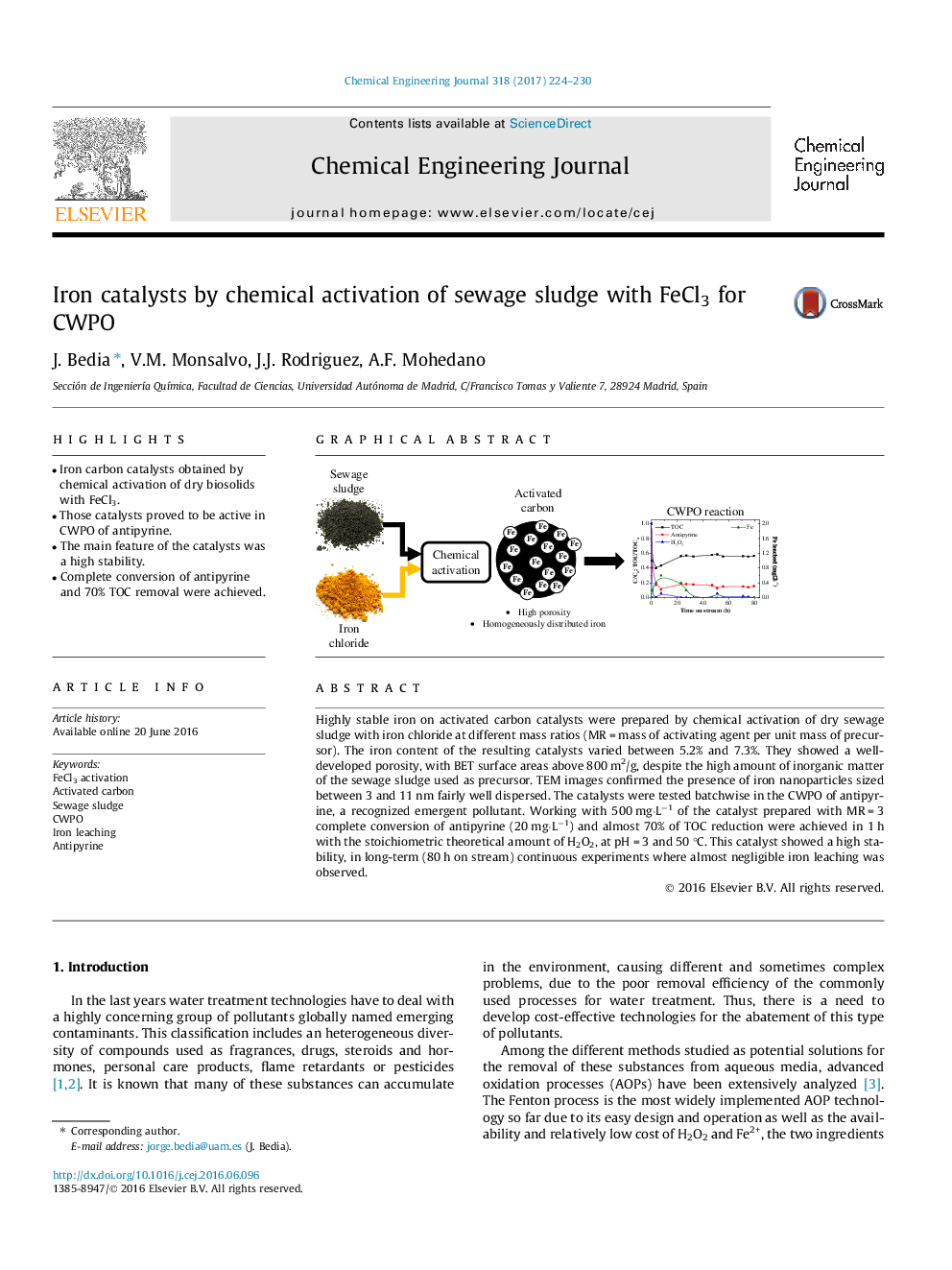| Article ID | Journal | Published Year | Pages | File Type |
|---|---|---|---|---|
| 6466281 | Chemical Engineering Journal | 2017 | 7 Pages |
â¢Iron carbon catalysts obtained by chemical activation of dry biosolids with FeCl3.â¢Those catalysts proved to be active in CWPO of antipyrine.â¢The main feature of the catalysts was a high stability.â¢Complete conversion of antipyrine and 70% TOC removal were achieved.
Highly stable iron on activated carbon catalysts were prepared by chemical activation of dry sewage sludge with iron chloride at different mass ratios (MR = mass of activating agent per unit mass of precursor). The iron content of the resulting catalysts varied between 5.2% and 7.3%. They showed a well-developed porosity, with BET surface areas above 800 m2/g, despite the high amount of inorganic matter of the sewage sludge used as precursor. TEM images confirmed the presence of iron nanoparticles sized between 3 and 11 nm fairly well dispersed. The catalysts were tested batchwise in the CWPO of antipyrine, a recognized emergent pollutant. Working with 500 mg·Lâ1 of the catalyst prepared with MR = 3 complete conversion of antipyrine (20 mg·Lâ1) and almost 70% of TOC reduction were achieved in 1 h with the stoichiometric theoretical amount of H2O2, at pH = 3 and 50 °C. This catalyst showed a high stability, in long-term (80 h on stream) continuous experiments where almost negligible iron leaching was observed.
Graphical abstractDownload high-res image (105KB)Download full-size image
